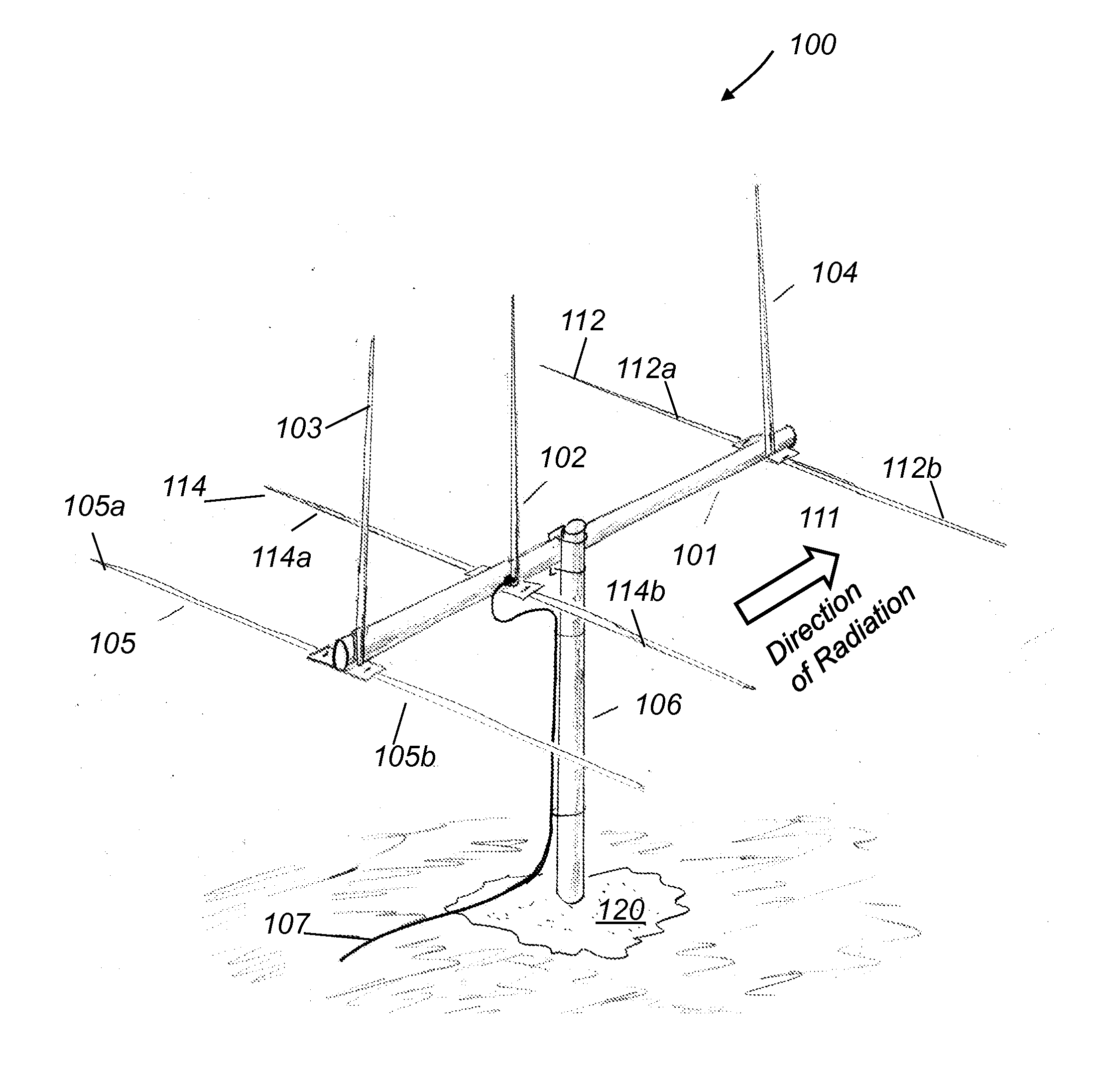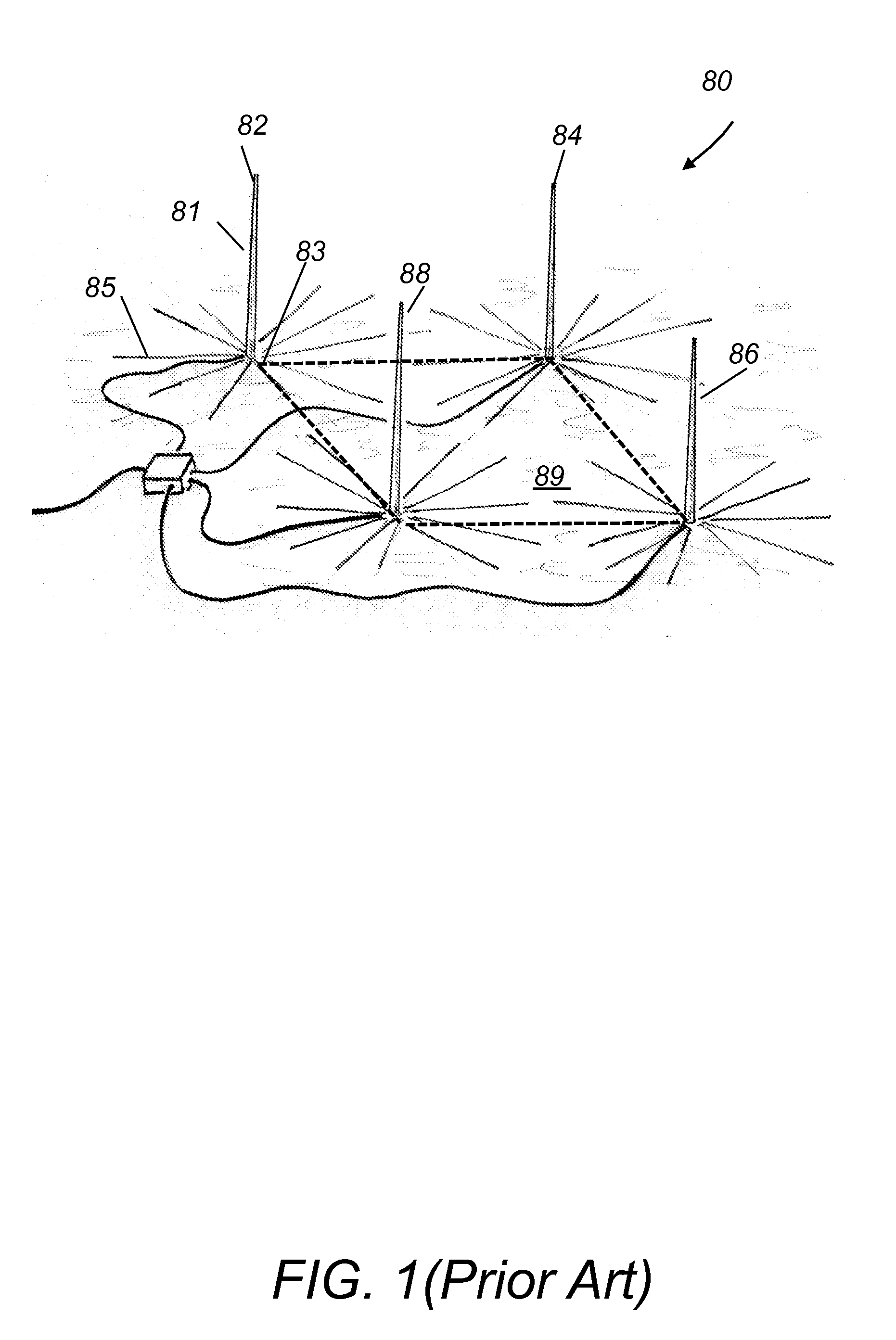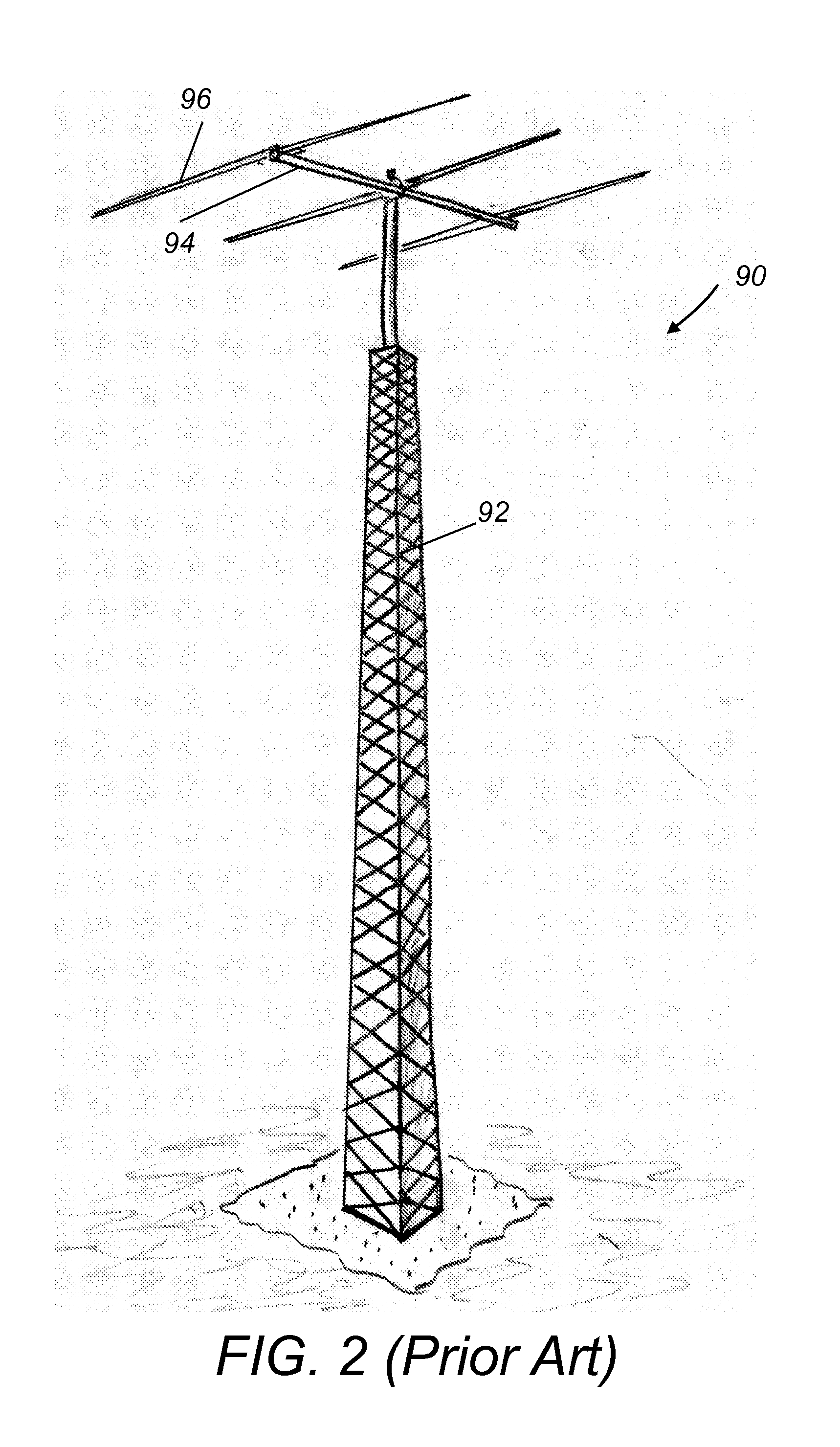Beam forming antenna
a beam-forming antenna and beam-forming technology, applied in the direction of antennas, elongated active element feeds, electrical devices, etc., can solve the problems of poor long-distance performance, significant signal loss, poor reception
- Summary
- Abstract
- Description
- Claims
- Application Information
AI Technical Summary
Benefits of technology
Problems solved by technology
Method used
Image
Examples
Embodiment Construction
[0018]Beam forming antennas in the HF service are either vertically or horizontally polarized. Referring to FIG. 1, a vertically polarized phased array of vertical antennas 80, called Four Square, includes four vertical antennas 82, 84, 86 and 88 that are arranged in the corners of a square 89. Each vertical antenna has a vertical mast 81 and a plurality of horizontal wires (radials) 85 extending radially from its base 83. The number and length of radials 85 strongly affect performance. Radials 85 are either buried or laying on the ground. Low ground conductivity (common in suburban environments) must be compensated for by adding more and longer radials. Because of these requirements, vertical arrays are seldom used by space limited stations.
[0019]Referring to FIG. 2, horizontally polarized beam forming antennas 90, such as Yagi and Log-Periodic antennas, must be mounted one wave-length above the ground to achieve low angles (20 degrees or less) of radiation and to avoid significant...
PUM
 Login to View More
Login to View More Abstract
Description
Claims
Application Information
 Login to View More
Login to View More - R&D
- Intellectual Property
- Life Sciences
- Materials
- Tech Scout
- Unparalleled Data Quality
- Higher Quality Content
- 60% Fewer Hallucinations
Browse by: Latest US Patents, China's latest patents, Technical Efficacy Thesaurus, Application Domain, Technology Topic, Popular Technical Reports.
© 2025 PatSnap. All rights reserved.Legal|Privacy policy|Modern Slavery Act Transparency Statement|Sitemap|About US| Contact US: help@patsnap.com



